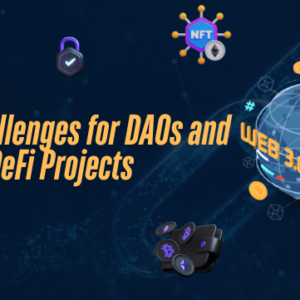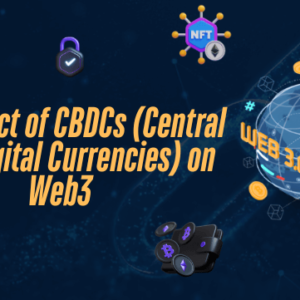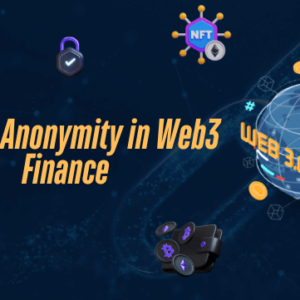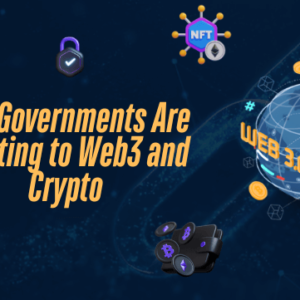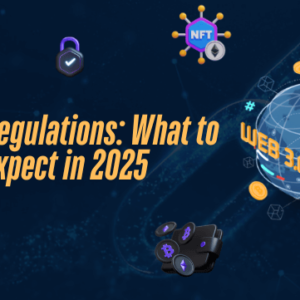How to Get Started with Web3: A Complete Beginner’s Guide (2025)
The digital landscape is evolving rapidly, and Web3 represents the next frontier of internet technology. Whether you’re a developer, investor, or simply curious about the future of the internet, this comprehensive guide will walk you through everything you need to know to begin your Web3 journey.
Understanding Web3: The Foundation
Web3 represents a paradigm shift in how we interact with the internet. Unlike its predecessors, Web3 is built on the fundamental principles of decentralization, transparency, and user ownership. This new iteration of the internet leverages blockchain technology, cryptocurrencies, and token-based economics to create a more equitable digital ecosystem.
The journey from Web1 to Web3 tells a fascinating story of internet evolution. Web1, often called the “read-only” internet, emerged in the early 1990s. During this era, users could only consume content, with websites serving as static information portals. The transition to Web2 in the mid-2000s brought about the “read-write” era, introducing social media platforms, user-generated content, and interactive applications. However, this era also saw the rise of tech giants who gained unprecedented control over user data and digital experiences.
Now, Web3 ushers in the “read-write-own” era, where users aren’t just participants but stakeholders in the platforms they use. This fundamental shift empowers individuals to own their data, digital assets, and even portions of the platforms themselves through novel governance mechanisms.
Essential Tools for Your Web3 Journey
The gateway to Web3 begins with setting up the right tools, and perhaps the most crucial among them is your Web3 wallet. Think of a Web3 wallet as your digital passport to the decentralized internet. It serves multiple purposes: storing your cryptocurrencies, managing your digital assets, and acting as your identity across various decentralized applications.
MetaMask has emerged as the most popular choice for beginners, offering a user-friendly interface while maintaining robust security features. The setup process involves installing the browser extension and creating your wallet. During this process, you’ll receive a seed phrase – a series of words that acts as the master key to your wallet. The importance of keeping this seed phrase secure cannot be overstated, as it represents complete access to your digital assets.
The Blockchain Landscape
The blockchain ecosystem has evolved far beyond its initial inception with Bitcoin. Ethereum revolutionized the space by introducing smart contracts, enabling developers to build complex applications on blockchain technology. However, the landscape has grown to include numerous blockchain networks, each with unique characteristics and advantages.
Ethereum remains the cornerstone of Web3 development, hosting thousands of decentralized applications and setting standards for smart contract implementation. However, its popularity has led to scaling challenges, particularly in terms of transaction costs and processing speed. This has given rise to alternative networks and scaling solutions.
Solana has gained prominence for its high-speed transaction processing and minimal fees, making it attractive for applications requiring frequent transactions. Polygon offers a compelling solution by providing an Ethereum-compatible environment with faster transactions and lower costs, while still benefiting from Ethereum’s security. The Binance Smart Chain has carved out its niche by offering a platform that combines low fees with accessibility for newcomers.
Navigating the Cryptocurrency Space
Cryptocurrencies serve as the lifeblood of the Web3 ecosystem, enabling everything from simple transactions to complex decentralized applications. For newcomers, the process of acquiring and managing cryptocurrencies might seem daunting, but it’s become increasingly streamlined over the years.
The journey typically begins with selecting a reputable cryptocurrency exchange. These platforms serve as the bridge between traditional finance and the crypto world, allowing you to convert your regular currency into cryptocurrencies. When choosing an exchange, factors like security measures, available trading pairs, fees, and geographical restrictions should guide your decision.
Understanding gas fees is crucial for anyone venturing into Web3. Gas fees represent the computational costs of performing actions on a blockchain network. These fees fluctuate based on network activity, with busier periods commanding higher prices. Learning to navigate these fees efficiently can significantly impact your Web3 experience and help you manage costs effectively.
Exploring Decentralized Finance (DeFi)
Decentralized Finance, or DeFi, represents one of the most transformative applications of Web3 technology. This innovative financial ecosystem removes traditional intermediaries like banks and financial institutions, replacing them with smart contracts and blockchain protocols. Through DeFi, users can access a wide range of financial services in a permissionless, transparent manner.
At the heart of DeFi are decentralized exchanges (DEXs), which revolutionize how we trade digital assets. Unlike centralized exchanges, DEXs operate through automated market maker protocols, enabling users to trade directly from their Web3 wallets. Uniswap, the pioneer in this space, introduced a model that many others have since followed. The platform allows anyone to provide liquidity and earn fees from trades, democratizing market-making opportunities that were previously reserved for institutional players.
Lending and borrowing in DeFi have also undergone a remarkable transformation. Platforms like Aave and Compound have created protocols where users can lend their assets to earn interest or borrow against their cryptocurrency holdings. These protocols operate 24/7, with interest rates adjusting automatically based on supply and demand. The transparency of these systems allows users to see exactly how interest rates are calculated and how the protocols manage risk.
The NFT Revolution
Non-fungible tokens (NFTs) have captured public imagination by introducing verifiable digital scarcity and ownership. While often associated with digital art, NFTs represent a fundamental shift in how we think about digital property rights. Each NFT is unique and cannot be replicated, providing proof of ownership that’s recorded on the blockchain.
The NFT ecosystem has evolved beyond simple collectibles to include virtual real estate, gaming assets, music rights, and even real-world asset tokenization. Artists and creators have found new ways to monetize their work directly, establishing closer relationships with their communities through NFT-based engagement models. The technology enables creators to earn royalties automatically whenever their NFTs are resold, creating sustainable revenue streams.
Web3 Development: Building the Future
For developers looking to contribute to the Web3 ecosystem, understanding smart contract development is essential. Smart contracts serve as the backbone of decentralized applications, executing predetermined rules without the need for intermediaries. Solidity, the primary programming language for Ethereum-based smart contracts, combines elements of JavaScript and C++ with blockchain-specific features.
Development in Web3 requires a shift in mindset from traditional web development. Instead of relying on centralized servers and databases, Web3 applications interact with blockchain networks through smart contracts. This introduces new considerations around gas optimization, transaction processing, and state management. Tools like Hardhat and Truffle have emerged to streamline the development process, providing testing frameworks and deployment tools specifically designed for blockchain applications.
Security in the Web3 Space
Security in Web3 requires a proactive approach, as the immutable nature of blockchain transactions means mistakes can be costly. Users must understand the importance of proper key management and safe interaction with decentralized applications. Hardware wallets have become the gold standard for securing significant digital assets, providing an extra layer of protection by keeping private keys offline.
The Web3 space has unfortunately attracted its share of malicious actors, making security awareness crucial. Common attack vectors include phishing attempts, fake websites impersonating legitimate projects, and malicious smart contracts. Users should always verify the authenticity of projects they interact with, checking contract addresses on block explorers and reviewing security audits when available.
Community and Governance
One of Web3’s most distinctive features is its emphasis on community governance through Decentralized Autonomous Organizations (DAOs). These organizations operate based on smart contracts and token-based voting systems, allowing community members to participate in decision-making processes. From managing protocol upgrades to allocating resources, DAOs represent a new model of organizational structure that aligns with Web3’s decentralized ethos.
The Future of Web3
As Web3 continues to evolve, we’re seeing increasing integration with traditional industries and systems. The rise of institutional interest in cryptocurrencies and blockchain technology suggests we’re moving toward a future where Web3 principles become more mainstream. Innovations in scaling solutions, improved user interfaces, and regulatory clarity are making Web3 more accessible to everyday users.
Getting Started: Your Next Steps
Beginning your Web3 journey doesn’t require diving into every aspect at once. Start by setting up a wallet and familiarizing yourself with basic transactions. Join communities on platforms like Discord or Twitter to learn from others’ experiences. Experiment with small amounts when exploring DeFi or NFTs, and gradually increase your involvement as you become more comfortable with the technology.
Remember that Web3 is still in its early stages, and the landscape is constantly evolving. Stay informed about security best practices, keep learning about new developments, and don’t hesitate to participate in community discussions. The decentralized nature of Web3 means that everyone has the opportunity to contribute to its growth and development.
Conclusion
Web3 represents more than just a technological evolution; it’s a fundamental reimagining of how we interact with the internet and each other in the digital space. While the learning curve may seem steep, the potential benefits of participating in this new digital economy make it worth the effort. As you begin your Web3 journey, remember that every expert was once a beginner, and the community is generally welcoming to newcomers eager to learn and contribute.
By understanding the fundamentals outlined in this guide, you’re well-equipped to start exploring the exciting possibilities that Web3 has to offer. Whether you’re interested in investing, developing, or simply participating in this new digital frontier, the key is to start small, stay curious, and always prioritize security as you navigate this revolutionary technology.
